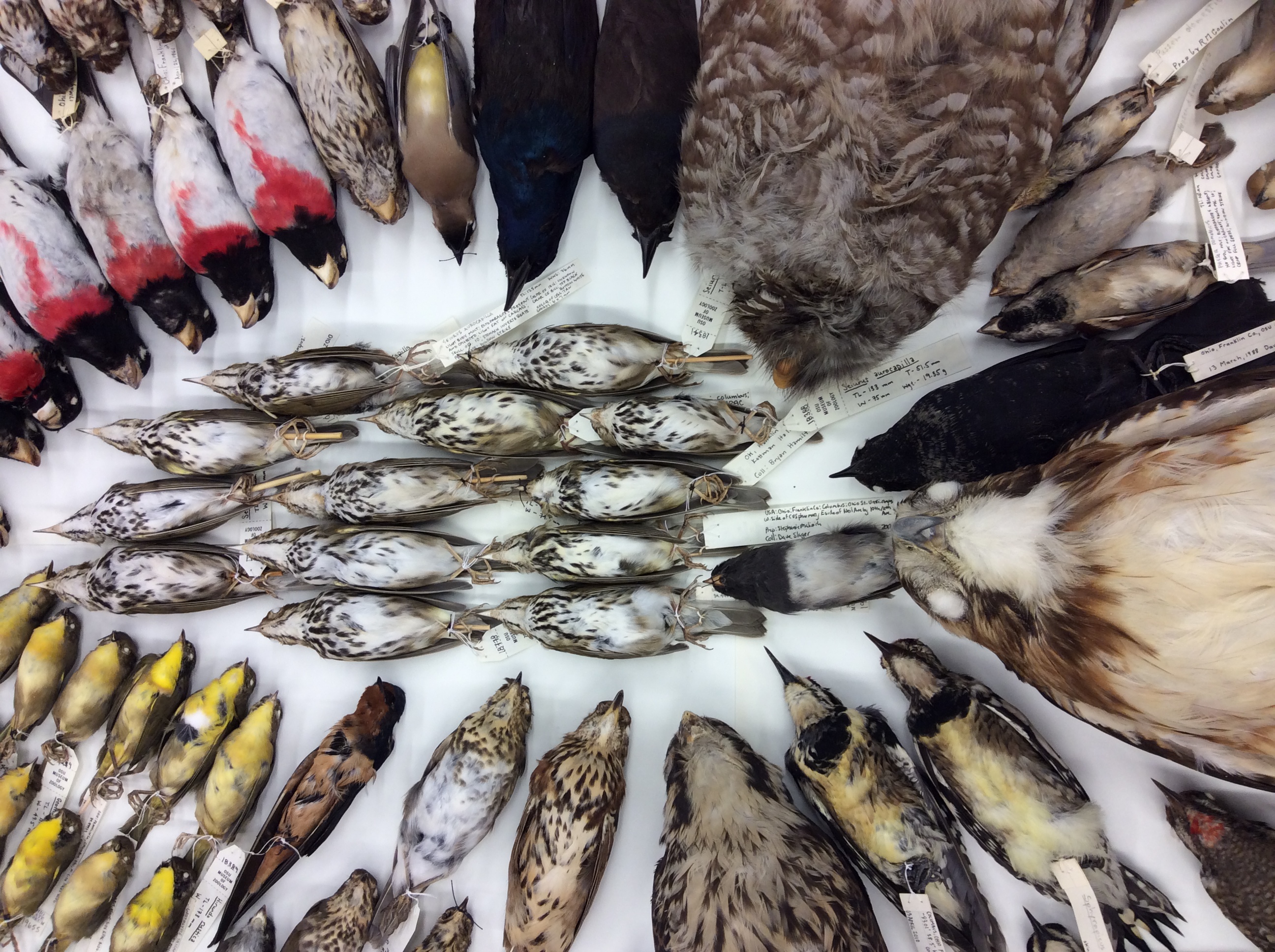by Raymond Gonzo, OSU zoology major
The other day I was working in the Amphibian section of the Tetrapod collection, when I saw two toad specimens that really stood out to me. The toads were almost the size of a Coke can, which is bigger than the American toads that you may find in your backyard. Another interesting thing I noticed about these toads was the fact that one specimen was collected in Fortin de las Flores, Mexico, and the second specimen came from Australia. How is it that these two specimens were collected on different sides of the planet? On the jars they were labeled Rhinella marinus, which struck a cord with me. I had heard that name many times before, but I couldn’t remember from where. A quick check through the Tetrapod Collection’s curatorial database revealed that the amphibian in question was none other than the infamous Cane Toad.
The Passenger Pigeon that I wrote about last month was a species that declined in numbers and went extinct due to human activities. The cane toad, Rhinella marinus, is an example of the opposite effect, a species that proliferates with human help.
Until the 1930s, the cane beetle, an Australian native whose larvae feast on the leaves of sugar cane, did excessive damage to the sugar cane crop. In order to control the beetle population, the cane toad was released as a new predator. The idea being that this toad would feast on the beetles and thus protect the sugar cane crop. However, it did not work out as planned, the cane toad became a major pest in itself.
Instead of controlling the beetles, the toads began eating everything in sight, which allowed them to thrive and reproduce at an alarming rate. If that weren’t enough, the toads are highly poisonous and release a deadly toxin if a predator, who has not evolved defense strategies against cane toad toxin, should try to eat them. In the Americas, there are predators who can eat the toads and consequently keep their population in check. For example, there are many crocodilian reptiles, snakes, and various species of fish that are both immune to the toxins and can be found in the toads’ natural habitat. Many Australian predators of frogs and toads are unfamiliar with the toxins and cannot tolerate them, which means they will often die from eating a cane toad. This has given the toads a chance to drastically increase in numbers. Interesting fact, the cane toad is in the same family (Bufonidae) as the American toad, Anaxyrus americanus, an example of related species having a very different effect on their environment, especially when displaced.
However, as recent studies show, over time species may evolve the ability to either recognize and avoid cane toads or be able to tolerate their toxins. In 2004, Ben Phillips and Richard Shine demonstrated that some Australian snake populations that are at risk of death by the cane toad have adapted to living with the invaders. The authors of this study found that snakes increased in size in areas where they co-exist with cane toads. Small individuals face a much higher risk of fatal poisoning by toads, thus over time this species has been selected for large body size. More recent studies have shown that spiders and ants may also help keep cane toad numbers in check. If you are interested in finding out more read this article in the Australian Geographic. You can also read the study conducted by Phillips and Shine.
There are hundreds of instances where animals from one part of the world are introduced to another area, and often times there are disastrous consequences. A local example of this is the Emerald ash
borer. The ash borer is a native to China, but turned into an invasive pest of ash trees in North America. Here at the Ohio State University, much research is being done on the impact these beetles are having on the local Ohio ecology. More information on the control of this pest can be found here.
When it comes to trying to control nature, mankind has a pretty mixed track record of both successes and failures. Invasive species such as the Norway rat, the feral pig, and the ball python are all examples of how carelessness can lead to the destruction of an ecosystem. The Cane Toad is just one in a long line of destructive invasive species, and with the increased inter-continental travel of the modern world, it certainly won’t be the last.
References
Phillips, B. L., and Shine R. 2004 Adapting to an Invasive Species: Toxic Cane Toads Induce Morphological Change in Australian Snakes. PNAS 101, 17150-7151.
http://www.pnas.org/content/101/49/17150.full

